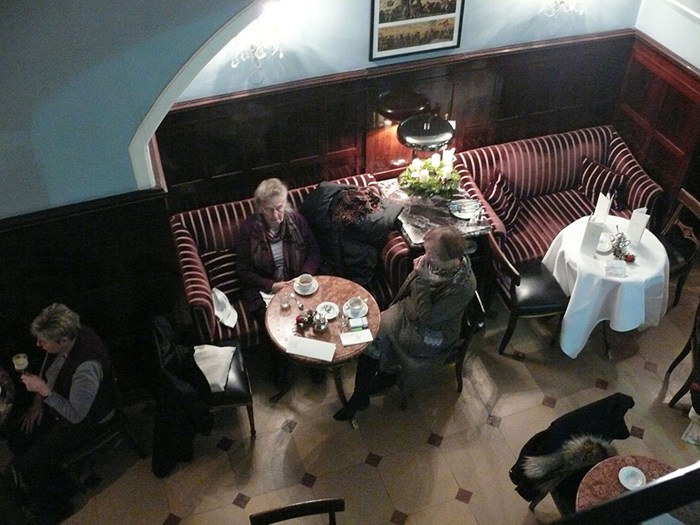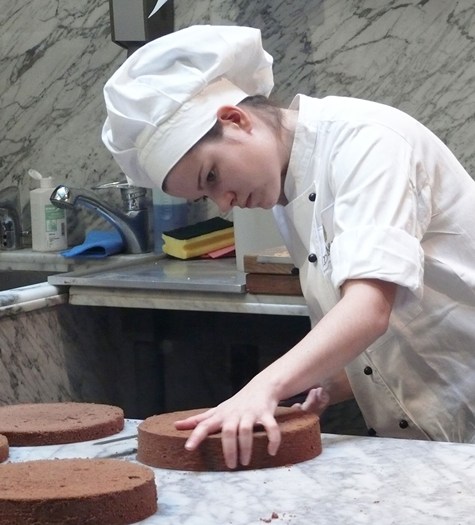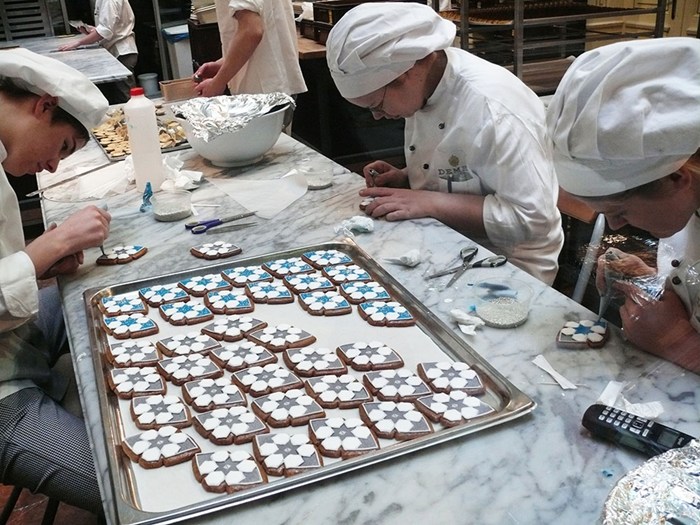VIENNA - The young backpackers walking the streets of this enchanting city clutching Starbucks cups attract contemptuous stares from some elderly locals. One grandmotherly type sneers at a group of Americans balancing their designer coffee in one hand while texting friends back home with the other.
“These people are ruining our city, our culture,” snarls the woman before disappearing behind the yawning doors of one of Vienna’s legendary coffeehouses.
The kaffeehaus is as important to the Viennese as classical music. In fact, many of the city’s great composers, like Mozart and Beethoven, would hang out in coffeehouses after performances sipping cups of their favourite brew.
Mozart’s last public performance was actually in the famed Frauenhuber Kaffeehaus on March 4, 1791, nine months before his death.
Even UNESCO lists the Viennese kaffeehaus as an “Intangible Cultural Heritage” and describes them as places “where time and space are consumed, but only the coffee is found on the bill.”
Some local travel companies even offer coffeehouse tours and, despite the appearance of international chains like Starbucks, Vienna’s coffeehouses appear to be doing just fine, thank you.
“The wait will be 20 to 30 minutes,” the hostess at the entrance to crowded Café Tirolerhof tells us. The iconic café is next to the Albertina Museum and is noted for its plum and cheese cakes. Who could resist?

Above: The Frauenhuber Kaffeehaus is one of the oldest in Vienna and it's where Mozart hung out after concerts.
As we wait to be seated, we are intrigued by Vienna’s kaffee culture where people slowly sip their brew while huddled over a newspaper, philosophize about world events, gossip or play chess.
Servers dressed in traditional black-and-white uniforms deliver cakes and pastries that are usually made on the premises. Lively banter always fills the air of Vienna’s coffeehouses, which at last count exceeded 800.
Of that number, though, only 150 are classified as “classic” coffeehouses. They’re easy to spot — weathered wooden floors, marble-top tables, plush décor and the black-and-white-attired servers distinguish them from the rest.
Some of the city’s best known coffeehouses are still owned by the original families and most of the “classic” shops are in the Old Town along the well-worn Stephansplatz tourist route. History tells us that a Greek named Johannes Theodat opened Vienna’s first coffeehouse in 1685 and others soon began popping up all over this, Europe’s loveliest city.
Many occupy space in historic buildings — the Griensteidl on Michaelerplatz, for example is in the former Palais Dietrichstein, one of Vienna’s great cultural institutions which dates back to the 1840s. The famed Café Central in Herrengasse is in one of the most striking buildings in the old city. You’ll love the Viennese cuisine, homemade cakes, pastries and the piano music in this establishment.


Above: An army of bakers skillfully crafts some delicious at the world famous Frauenhuber Kaffeehaus.
The Café Museum, which opened its doors in 1899 in the Naschmarkt, is another coffeehouse landmark where artist Gustav Klimt and architect Otto Wagner were regularly seen.
Café Hawelka in the 1st District was the place where literary giants liked to gather and its original owner, Leopold Hawelka lived to the ripe old age of 101. Vienna’s coffee obviously has some medical benefits.
Vienna’s traditional coffehouses almost faded away in the 1960s and ’70s and those that survived needed major repairs. Thanks to a coffeehouse renaissance in the late 1990s, many, like the Schwarzenberg at Karntner Ring, were returned to their former glory while others reopened sporting 21st century looks. Some now even offer DJ music.
When you’re visiting Vienna, may I suggest you stop by:
Café Bellaria: A friendly café steeped in tradition, close to the Ringstrasse, Kunsthistorisches Museum and the Museums Quartier. The food is excellent and the waiters are friendly and helpful. Relaxation is definitely the order of the day here.
Café Hofburg: This elegant café awaits you in the Imperial Palace, where the Sisi Museum, the Imperial Apartments, the Silver Collection, the Treasuries and the Spanish Riding School bring about nostalgic dreams.
Landtmann beim Burgtheater: Franz Landtmann created a coffeehouse institution when he opened Vienna’s largest “café locality” in 1873. His patrons have included Sigmund Freud, Marlene Dietrich, Romy Schneider, Paul McCartney and Hillary Clinton.
Café Mozart: There has been a café on this site since 1794. During the Biedermeier period (1815-1848), it became a popular meeting place for artists. Right opposite the Albertina, and close to the museums in the Imperial Palace and the opera house, to this day this tradition-steeped café combines culture with fine coffee.
Café-Restaurant im Naturhistorischen Museum: Creative breakfast in the cupola hall, along with snacks and main dishes, Viennese confectionery, coffee and tea specialties. Wednesday’s dinner: “Fair sea and lake delicacies.”
Café Sacher: Enjoy the authentic Viennese coffeehouse atmosphere with a slice of original Sachertorte and a cup of Sacher coffee. The rich Sachertorte is one of my favourite cakes and one of the most sought after worldwide.
Information
What to ask for in a Vienna coffee house: Schwarzer or Mokka: Strong black coffee without milk / Kleiner / Grosser Brauner: Black coffee with cream, small or large cup / Verlängerter: Kleiner Schwarzer or Brauner, “lengthened“ with hot water / Melange: Mokka “lengthened” by a shot of hot water, with steamed milk and milk foam / Kapuziner: Small black coffee with a couple of drops of cream / Franziskaner: Light Melange topped with whipped cream / Einspänner: Large Mokka in a glass with lots of whipped cream / Fiaker: Mokka in a glass with a shot of rum / Türkischer: Turkish-style, unfiltered mocha / Wiener Eiskaffee: Cold coffee with vanilla ice cream and whipped cream – yum!
About the Author
Marc Atchison is a veteran journalist and a seasoned traveller with more than 20 years of travel writing experience. As the former Travel Editor of the Toronto Star, Canada's largest newspaper, and now Editor-in-Chief and Senior Writer for TraveLife magazine (Canada) and travelife.ca, Marc has been to over 100 countries in the world. Japan is one of his favorite destinations and he's been there on numerous occasions.